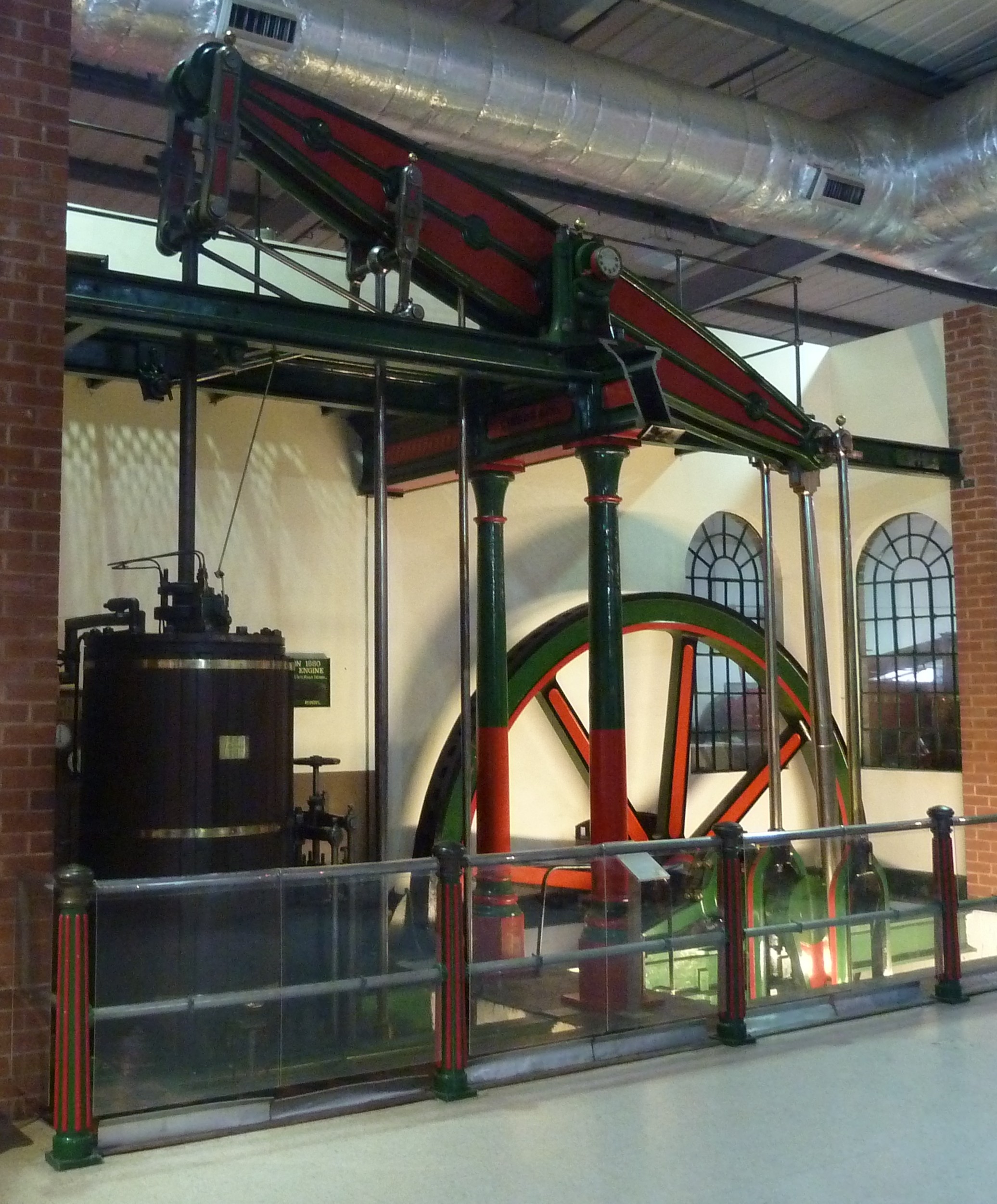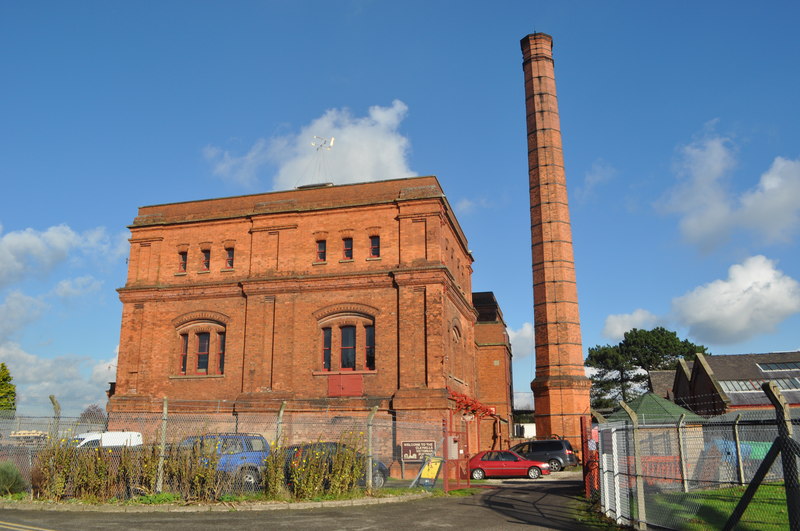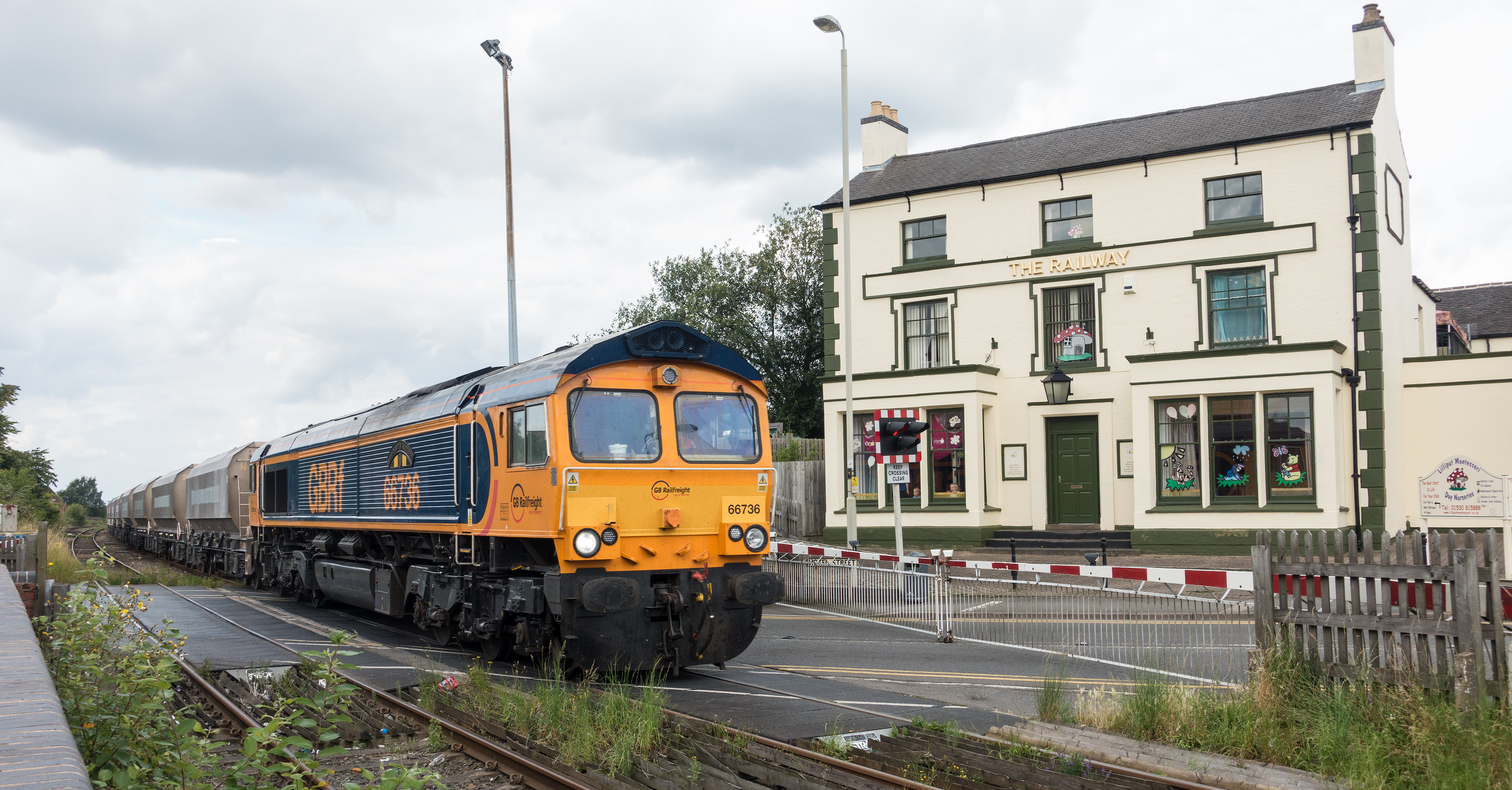|
Gimson And Company
Gimson and Company were founded in 1840 by Josiah and Benjamin Gimson on Welford Road in Leicester. The company were listed as Engineers, Ironfounders, Boiler Makers & General Machinists. They later moved to Vulcan Works, Vulcan Road, Humberstone Road, Leicester. Expansion Between 1876 and 1878 a new works, Vulcan Foundry, was developed beside the Midland Railway mainline. The site covered three and a half acres, the foundry shop was 180 ft by 62 ft. It had a workforce of 350 men and all lifting was done with steam hoists and travelling cranes. Products Stationary steam engines, passenger and goods lifts, boot and shoe machinery, agricultural machinery. Preserved steam engines Woolf compound rotative beam pumping engines; * Four of 1885 at Claymills Pumping Station, Burton on Trent. Claymills Pumping Station trust site * Four of 1891 ... [...More Info...] [...Related Items...] OR: [Wikipedia] [Google] [Baidu] |
Gimson Beam Engine, Snibston
Gimson is a surname which may refer to: *John Gimson (1983), Olympic silver Medalist *Alfred C. Gimson (1917–1985), English phonetician *Andrew Gimson (born 1958), British political journalist and writer *Christopher Gimson (1886–1975), English cricketer and colonial administrator *Ernest Gimson (1864–1919), English furniture designer and architect *Sir Franklin Gimson (1890–1975), British colonial administrator in Ceylon, Hong Kong and Singapore *Robert Gimson (born 1986), former American football running back *Sally Gimson, British Labour Party politician *Samson Gimson (born 1964), Singaporean professional golfer See also *Gimson (cycles), Catalan bicycle and motorcycle brand *Gimson and Company, British steam engine manufacturer *Grimson, surname {{Surname ... [...More Info...] [...Related Items...] OR: [Wikipedia] [Google] [Baidu] |
Claymills Pumping Station
Claymills Pumping Station is a restored Victorian sewage pumping station on the north side of Burton upon Trent, Staffordshire, England. It was designed by James Mansergh and used to pump sewage to the sewage farm at Egginton. The main pumping plant consists of four Woolf compound, rotative, beam pumping engines. These are arranged in mirror image pairs, in two separate engine houses, with a central boiler house (containing five Lancashire boilers with economisers) and chimney. The engines were built in 1885 by Gimson and Company of Leicester. All the engines are similar, and the following description is limited to only one, but applicable to all. The high-pressure cylinder is 24-inch bore by 6-foot stroke, and the low-pressure cylinder is 38-inch bore by 8-foot stroke. Steam is distributed by means of double beat 'Cornish' valves, mounted in upper and lower valve chests. The cylinders act on one end of the beam, via Watt's parallel motion. The beam itself is 26 feet 4 i ... [...More Info...] [...Related Items...] OR: [Wikipedia] [Google] [Baidu] |
Manufacturing Companies Based In Leicester
Manufacturing is the creation or production of goods with the help of equipment, labor, machines, tools, and chemical or biological processing or formulation. It is the essence of secondary sector of the economy. The term may refer to a range of human activity, from handicraft to high-tech, but it is most commonly applied to industrial design, in which raw materials from the primary sector are transformed into finished goods on a large scale. Such goods may be sold to other manufacturers for the production of other more complex products (such as aircraft, household appliances, furniture, sports equipment or automobiles), or distributed via the tertiary industry to end users and consumers (usually through wholesalers, who in turn sell to retailers, who then sell them to individual customers). Manufacturing engineering is the field of engineering that designs and optimizes the manufacturing process, or the steps through which raw materials are transformed into a final product. T ... [...More Info...] [...Related Items...] OR: [Wikipedia] [Google] [Baidu] |
Steam Engine Manufacturers
Steam is a substance containing water in the gas phase, and sometimes also an aerosol of liquid water droplets, or air. This may occur due to evaporation or due to boiling, where heat is applied until water reaches the enthalpy of vaporization. Steam that is saturated or superheated is invisible; however, "steam" often refers to wet steam, the visible mist or aerosol of water droplets formed as water vapor condenses. Water increases in volume by 1,700 times at standard temperature and pressure; this change in volume can be converted into mechanical work by steam engines such as reciprocating piston type engines and steam turbines, which are a sub-group of steam engines. Piston type steam engines played a central role in the Industrial Revolution and modern steam turbines are used to generate more than 80% of the world's electricity. If liquid water comes in contact with a very hot surface or depressurizes quickly below its vapor pressure, it can create a steam explosion. Types ... [...More Info...] [...Related Items...] OR: [Wikipedia] [Google] [Baidu] |
Hall & Woodhouse
Hall and Woodhouse is a British regional brewery founded in 1777 by Charles Hall in Blandford Forum, Dorset, England. The company operates over 250 public houses in the south of England, and brews under the name Badger Brewery. History The brewery traces its roots to 1777, when Charles Hall founded the Ansty Brewery in Ansty, Dorset. The Hall & Woodhouse partnership dates from 1847, when Charles' son and successor went into business with George Woodhouse, who had earlier been employed as head brewer. In 1875, the firm's logo of a badger was first introduced, and in 1900, when a new brewery was built to replace the original, it was named after the logo. The logo has evolved over the years. The firm remains a family business. In 1991 the brewpub ''Gribble Inn'' in Oving, West Sussex was acquired. Though it was sold back to the landlord in 2005, Hall & Woodhouse retained the rights to the brand name ''Fursty Ferret'', the brewpub's most well-known beer. In 2000 the King and ... [...More Info...] [...Related Items...] OR: [Wikipedia] [Google] [Baidu] |
Snibston Discovery Museum
Snibston is an area and former civil parish east of Ravenstone, now in the parish of Ravenstone with Snibstone, in the North West Leicestershire district, in the county of Leicestershire, England. Originally rural, part of Snibston was transformed into a coal mining village by the opening of coal mines by the Snibston Colliery Company in the early 1830s. This industrial part of Snibston was subsequently subsumed into the developing town of Coalville, though small rural areas of Snibston survive within the civil parishes of Ravenstone with Snibston and Hugglescote and Donington le Heath. In the part of Snibston within the latter civil parish stands the 13th-century church of St Mary, noted as the smallest church still in use for regular worship in England. The main Snibston Colliery was sunk in 1831, and after its closure the Snibston Country Park with the Snibston Discovery Museum (now closed) was built on part of the colliery site. Part of the park is Snibston Grange Local Nat ... [...More Info...] [...Related Items...] OR: [Wikipedia] [Google] [Baidu] |
Forncett Industrial Steam Museum
Forncett is a civil parish in the English county of Norfolk. It covers an area of and had a population of 1,000 in 381 households at the 2001 census, increasing to 1,126 at the 2011 census. For the purposes of local government, it falls within the district of South Norfolk. It includes the villages of Forncett St Peter's, Forncett St Mary and Forncett End. Governance An electoral ward in the same name exists. This ward stretches north to Ashwellthorpe and Fundenhall with a total population at the 2011 Census of 2,701. Forncett Industrial Steam Museum The Forncett Industrial Steam Museum houses a collection of large stationary steam engines which are occasionally demonstrated to the public. Included in the collection is a 150 hp Vickers Armstrong cross-compound pumping engine originally used to open Tower Bridge in London. It was the 'third' steam engine, installed as a wartime precaution against air-raid damage, and was removed to Forncett in 1974. The two origina ... [...More Info...] [...Related Items...] OR: [Wikipedia] [Google] [Baidu] |
Coalville
Coalville is an industrial town in the district of North West Leicestershire, Leicestershire in the East Midlands of England, with a population at the 2011 census of 34,575. It lies on the A511 trunk road between Leicester and Burton upon Trent, close to junction 22 of the M1 motorway where the A511 meets the A50 between Ashby-de-la-Zouch and Leicester. It borders the upland area of Charnwood Forest to the east of the town. Coalville is twinned with Romans-sur-Isère in southeastern France. History Coalville is a product of the Industrial Revolution. As its name indicates, it is a former coal mining town and was a centre of the coal-mining district of north Leicestershire. It has been suggested that the name may derive from the name of the house belonging to the founder of Whitwick Colliery: 'Coalville House'. However, conclusive evidence is a report in the ''Leicester Chronicle'' of 16 November 1833: 'Owing to the traffic which has been produced by the Railway and New ... [...More Info...] [...Related Items...] OR: [Wikipedia] [Google] [Baidu] |
Snibston Discovery Park
Snibston is an area and former civil parish east of Ravenstone, now in the parish of Ravenstone with Snibstone, in the North West Leicestershire district, in the county of Leicestershire, England. Originally rural, part of Snibston was transformed into a coal mining village by the opening of coal mines by the Snibston Colliery Company in the early 1830s. This industrial part of Snibston was subsequently subsumed into the developing town of Coalville, though small rural areas of Snibston survive within the civil parishes of Ravenstone with Snibston and Hugglescote and Donington le Heath. In the part of Snibston within the latter civil parish stands the 13th-century church of St Mary, noted as the smallest church still in use for regular worship in England. The main Snibston Colliery was sunk in 1831, and after its closure the Snibston Country Park with the Snibston Discovery Museum (now closed) was built on part of the colliery site. Part of the park is Snibston Grange Local Nat ... [...More Info...] [...Related Items...] OR: [Wikipedia] [Google] [Baidu] |
Abbey Pumping Station
The Abbey Pumping Station is a museum of science and technology in Leicester, England, on Corporation Road, next to the National Space Centre. With four working steam-powered beam engines from its time as a sewage pumping station, it also houses exhibits for transport, public health, light and optics, toys and civil engineering. Sewage pumping station The building was constructed in 1891 by Leicester Corporation on the north side of Leicester, alongside the River Soar, as a pumping station used to pump the town's sewage to the sewage farm at Beaumont Leys. The grand Victorian building, designed by Stockdale Harrison (Leicester architect) in 1890, houses four Arthur Woolf compound beam engines built by Gimson and Company of Leicester. The first attempt to respond to the population's sewage disposal was in 1850 when piped water made water closets possible, and Thomas Wicksteed designed and built sewers leading to a sedimentation and de-oderisation treatment works on the northern, ... [...More Info...] [...Related Items...] OR: [Wikipedia] [Google] [Baidu] |
Burton On Trent
Burton upon Trent, also known as Burton-on-Trent or simply Burton, is a market town in the borough of East Staffordshire in the county of Staffordshire, England, close to the border with Derbyshire. In 2011, it had a population of 72,299. The demonym for residents of the town is ''Burtonian''. Burton is located south-west of Derby, north-west of Leicester, west-south-west of Nottingham and south of the southern entrance to the Peak District National Park. Burton is known for its brewing. The town grew up around Burton Abbey. Burton Bridge was also the site of two battles, in 1322, when Edward II defeated the rebel Earl of Lancaster and in 1643 when royalists captured the town during the First English Civil War. William Lord Paget and his descendants were responsible for extending the manor house within the abbey grounds and facilitating the extension of the River Trent Navigation to Burton. Burton grew into a busy market town by the early modern period. The town is ser ... [...More Info...] [...Related Items...] OR: [Wikipedia] [Google] [Baidu] |
Rotative Beam Engine
A beam engine is a type of steam engine where a pivoted overhead beam is used to apply the force from a vertical piston to a vertical connecting rod. This configuration, with the engine directly driving a pump, was first used by Thomas Newcomen around 1705 to remove water from mines in Cornwall. The efficiency of the engines was improved by engineers including James Watt, who added a separate condenser; Jonathan Hornblower and Arthur Woolf, who compounded the cylinders; and William McNaught, who devised a method of compounding an existing engine. Beam engines were first used to pump water out of mines or into canals but could be used to pump water to supplement the flow for a waterwheel powering a mill. The rotative beam engine is a later design of beam engine where the connecting rod drives a flywheel by means of a crank (or, historically, by means of a sun and planet gear). These beam engines could be used to directly power the line-shafting in a mill. They also could ... [...More Info...] [...Related Items...] OR: [Wikipedia] [Google] [Baidu] |











